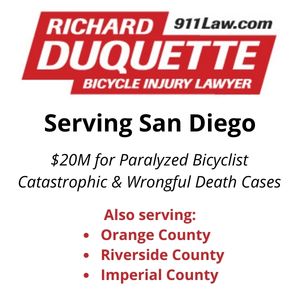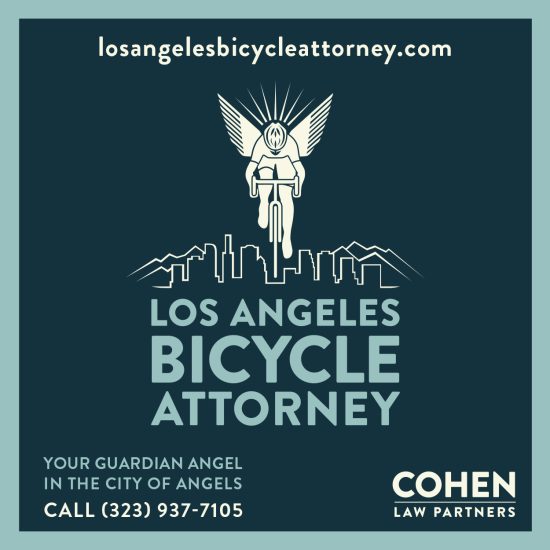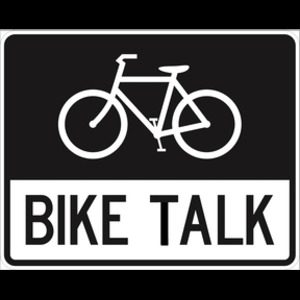Let’s get the bad news out of the way first.
Donald Murphy of Irvine was critically injured in yet another hit-and-run around 6 am Wednesday while riding in the northbound bike lane on Jamboree Road near the intersection with Ford Road in Irvine. According to police, a driver indentified as Patricia Ann Izquieta entered the bike lane he was riding in while making an “unsafe turning maneuver,” striking him and leaving a 300-yard pattern of debris.
That’s three football fields of bike parts strewn along the roadway from the bicycle trapped under her car as she fled the scene.
Izquieta was stopped by police a few blocks later with damage to the windshield and front undercarriage of her car, and is being held in Orange County Jail on $50,000 bond. Police reports indicate that she was not on a cell phone and alcohol does not appear to be a factor.
Witnesses said Murphy was wearing a helmet and riding in a safe and legal manner when struck. A passing driver stopped to give CPR along with one of his riding partners
Murphy was transported to Western Medical Center – Santa Ana. The Orange County Register quotes Lt. Rob Morton of the Newport Beach Police as saying “He’s in pretty bad shape.”
Update: Today’s OC Register reports that Murphy died at Western Medical Center on Thursday; there was no comment from the family. My deepest condolences to his family and loved ones.
………
The LACBC finally has preliminary results from the city’s first bike count.
What I find interesting is that only 12% of the riders were female — less than the number of children counted — while 54% of riders weren’t wearing a helmet, 38% were on the sidewalk, and 6% were riding the wrong way.
They also offer an LACBC-centric report on Wednesday’s semi-bike-only Transportation Committee meeting.
……..
There’s no shortage of big hearts in biking community.
But I never fail to be impressed by gull rescuer and stray dog wrangler Will Campbell — although his odd attachment to ‘Bama football does make me wonder sometimes. So I wasn’t surprised to learn that the Midnight Ridazz All-City Toy Ride was his idea, though he gives much of the credit for organizing the first ride to Ridazz co-founder Roadblock.
The ride kicks off tonight — appropriately enough on the first night of Channukah — from various points throughout the city, converging on the Plaza Gazebo on Olvera Street around 10 pm. Riders are asked to bring an unwrapped toy valued at $5 to $25 dollars for free admission to the after party; toys will be donated to the East L.A. Women’s Center.
Click here or visit the Ridazz website for more information.
……..
Recently I included a link to the excellent Bike San Diego website, for a story about a cyclist who was ticketed for passing a short row of stopped vehicles on the left, even though that is not prohibited under California law.
The judge upheld the ticket, convicting Andrew Woolley for violating CVC 21202, despite the fact that his actions were explicitly allowed under the statute. According to the judge, the exceptions allowed under 21202 did not apply, since the speed limit on the road is 35 mph, which he determined was the normal speed of traffic — even though 21202 specifically refers to the speed of traffic “moving in the same direction at that time.”
Writing on Bob Mioske’s website, Rick Bernardi offers a great examination of exactly why the judge was in error, while noting that it sometimes doesn’t make any difference if the law is on your side. And contrasts it with a Utah case, in which a cyclist was cited for doing exactly what the judge in the Woolley case said he should have done.
So let me see if I’ve got this right. You can’t pass on the right, and you can’t pass on the left. Or maybe you’re required to break the law one way in Utah, and another in California. Or the judge is allowed to misapply the law one way in one state, and another in the other.
Damned if you do, damned if you don’t.
You can read the full transcript of the Woolley case here, and see the opening brief to his appeal here.
And buy a copy of Catch 22 — which seems to be the new judicial standard — here.
………
Last week’s Ballona Creek Gateway opening included an announcement of the planned Mar Vista Greenway. Lance commits to two more years. Traffic author Tom Vanderbilt suggests that cyclists should consider the Adopt a Highway model for bike lane maintenance. Cycling fashion dilemma: to wear a day-glo vest or not? Denver re-writes its bike laws to conform with the new state laws; Tucson Bike Lawyer notes that it’s now legal to ride to a bike rack on the sidewalk. The police can’t — or won’t — keep cars out of NYC bike lanes, but maybe a bunch of clowns will. New York’s DIY bike lanes have already been painted over; the alleged artists reportedly will plead not guilty. UPS is making some holiday deliveries by bike. Austin struggles to find consensus on the city’s first bike boulevard. A Utah cyclist is under arrest for groping another rider. London’s Evening Standard reports work has begun on “Mayor Boris Johnson’s cycle-hire scheme;” no bias there, huh? An Indian student is murdered by his friends after buying a new bike. Some friends. Finally, it’s 13 degrees in Chicago, and cyclists are still riding — even if that means riding on studded bike tires.





